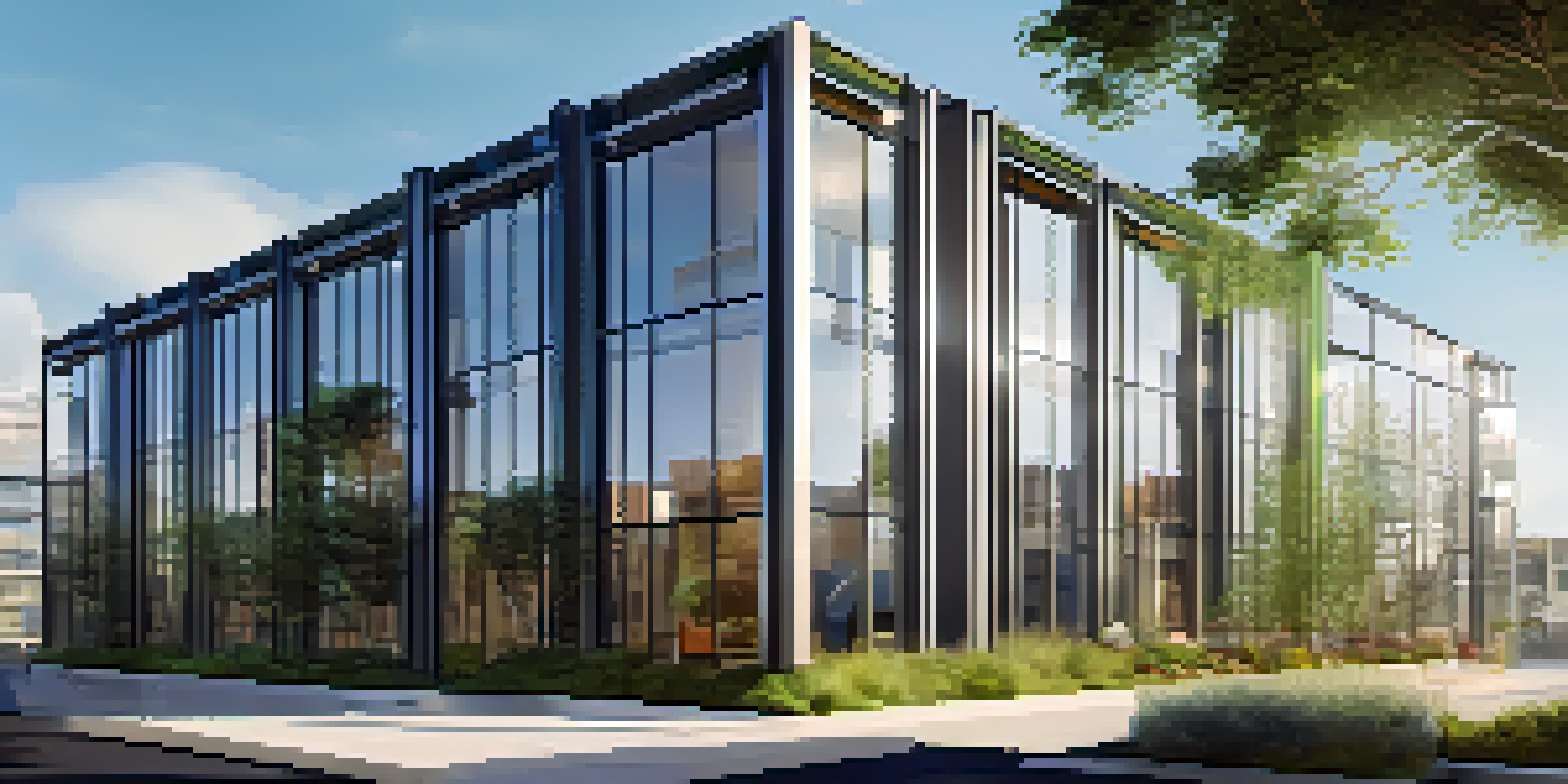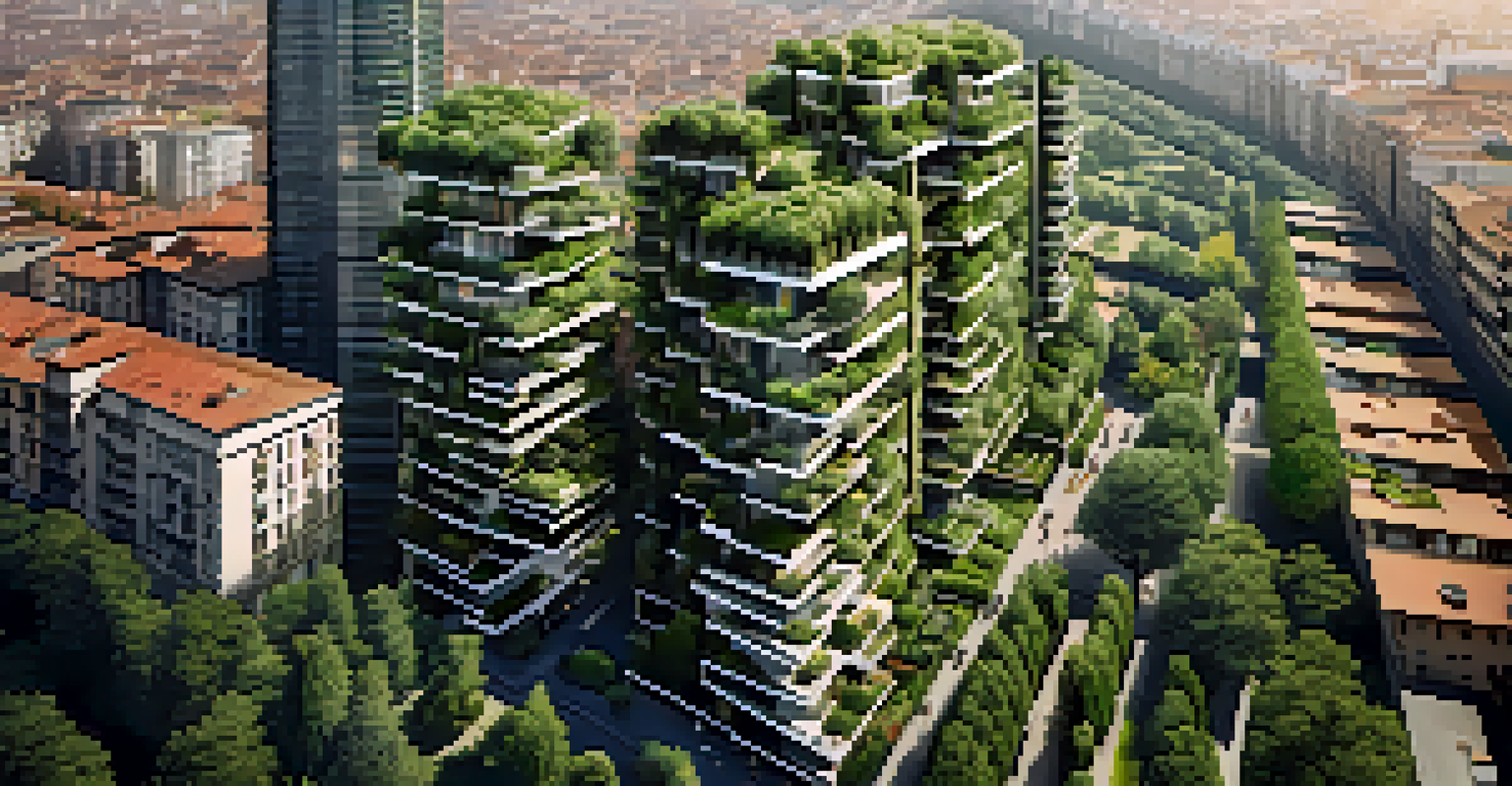The Importance of Climate-Responsive Architecture in Design

Understanding Climate-Responsive Architecture
Climate-responsive architecture refers to designs that adapt to and harmonize with the local climate. This approach prioritizes the natural environment, ensuring that buildings are not just aesthetically pleasing but also functional and sustainable. By considering factors like sunlight, wind, and rainfall, architects can create spaces that enhance comfort and reduce energy consumption.
Architecture should speak of its time and place, but yearn for timelessness.
For example, a building designed in a hot climate may feature overhangs or green roofs to keep it cool and minimize the need for air conditioning. Similarly, structures in colder regions might incorporate large windows to maximize sunlight and warmth during the winter months. These thoughtful designs not only improve the living experience but also help in reducing the carbon footprint.
Ultimately, climate-responsive architecture represents a shift away from the traditional, one-size-fits-all approach to design. It recognizes that different environments require unique solutions, leading to healthier, more sustainable communities.
The Benefits of Climate-Responsive Design
One of the primary benefits of climate-responsive design is energy efficiency. Buildings that are designed to take advantage of natural climatic conditions can significantly lower their energy needs. For instance, passive solar design utilizes sunlight for heating, thereby reducing reliance on artificial heating sources.

In addition to energy savings, these designs often lead to improved indoor air quality and natural lighting. When buildings are oriented and constructed with the climate in mind, they can enhance occupant comfort and well-being. This not only makes for a more pleasant living environment but can also lead to increased productivity in workplaces.
Climate-Responsive Design Explained
This architectural approach harmonizes buildings with their local climate to enhance sustainability and comfort.
Moreover, climate-responsive architecture contributes to sustainability. By using local materials and reducing energy consumption, these buildings can minimize their environmental impact, which is crucial in today’s fight against climate change.
The Role of Technology in Climate-Responsive Architecture
Advancements in technology have played a pivotal role in the evolution of climate-responsive architecture. Modern tools such as Building Information Modeling (BIM) allow architects to simulate and analyze building performance in different climatic conditions before construction begins. This leads to more informed design decisions that prioritize energy efficiency and sustainability.
The best way to predict the future is to create it.
Additionally, smart building technologies can further enhance the climate responsiveness of a structure. These systems can adjust lighting, heating, and cooling based on occupancy and weather patterns, ensuring that energy is used efficiently and effectively. For example, smart windows can tint automatically in response to sunlight, reducing the need for air conditioning.
As technology continues to advance, the potential for climate-responsive architecture becomes even greater. With innovations emerging regularly, architects and designers are better equipped to create buildings that are not only beautiful but also in harmony with their environments.
Case Studies of Successful Climate-Responsive Projects
There are numerous inspiring examples of climate-responsive architecture around the world. One notable project is the Bosco Verticale in Milan, Italy, a pair of residential towers that incorporate thousands of trees and plants on their terraces. This design not only enhances air quality but also helps to regulate temperature and provides natural insulation.
Another compelling case is the Eden Project in Cornwall, England, which features geodesic domes housing diverse plant species. The design of the domes allows for optimal sunlight capture while minimizing energy use for heating and cooling. This project demonstrates how architecture can coexist with nature while promoting biodiversity.
Technology Enhances Sustainability
Advancements like Building Information Modeling and smart systems enable architects to create energy-efficient structures.
These examples show that integrating climate-responsive principles can lead to stunning and innovative designs that not only meet human needs but also support ecological balance. They inspire architects to think creatively about how their work can positively impact both people and the planet.
Challenges in Implementing Climate-Responsive Architecture
While the benefits of climate-responsive architecture are clear, there are also challenges in its implementation. One significant barrier is the initial cost of designing and building such structures. Advanced materials, technology, and consultation with sustainability experts can drive up expenses, making it a tough sell for some developers.
Moreover, there can be a lack of awareness or understanding among stakeholders about the long-term savings and benefits of these designs. Often, traditional methods are preferred because they are familiar, leaving climate-responsive solutions overlooked. Education and advocacy are crucial to changing this mindset and promoting sustainable practices.
Lastly, regulatory hurdles can pose challenges, as building codes and zoning laws may not yet accommodate innovative designs. Advocating for policy changes that support climate-responsive architecture is essential to overcome these obstacles and pave the way for a more sustainable future.
The Future of Climate-Responsive Architecture
Looking ahead, the future of climate-responsive architecture seems promising as awareness of climate change continues to grow. Architects and designers are increasingly prioritizing sustainability in their work, embracing innovative materials and techniques that align with ecological principles. This shift indicates a broader commitment to designing buildings that respect and respond to their environments.
Furthermore, as cities expand and climate challenges intensify, the demand for adaptable and resilient designs will only increase. Climate-responsive architecture will become essential in creating urban spaces that can withstand extreme weather events and other climate-related challenges. This adaptation not only protects infrastructure but also enhances community resilience.
Advocacy for Sustainable Practices
Community engagement and support for climate-responsive architecture can drive policy changes and promote eco-friendly designs.
Ultimately, the future of architecture lies in an empathetic approach to design—one that values the relationship between buildings and their natural surroundings. By continuing to invest in climate-responsive strategies, we can create a built environment that is as sustainable as it is beautiful.
How to Advocate for Climate-Responsive Architecture
Advocating for climate-responsive architecture starts at the community level. Individuals can promote awareness by discussing the importance of sustainable design practices with neighbors and local leaders. Sharing success stories and case studies can help illustrate the tangible benefits of climate-responsive buildings, fostering a broader understanding of their value.
Engaging with local governments and planning boards is another effective way to advocate for these principles. By attending meetings and providing input on zoning laws and building codes, community members can push for regulations that support sustainable architecture. This grassroots involvement can lead to significant changes in local policies.

Finally, supporting architects and builders who prioritize climate-responsive designs can drive demand for sustainable practices. Choosing to invest in eco-friendly buildings or renovations not only benefits the environment but also sets a precedent for future developments. Collectively, these efforts can create a lasting impact on the way we design and build our communities.